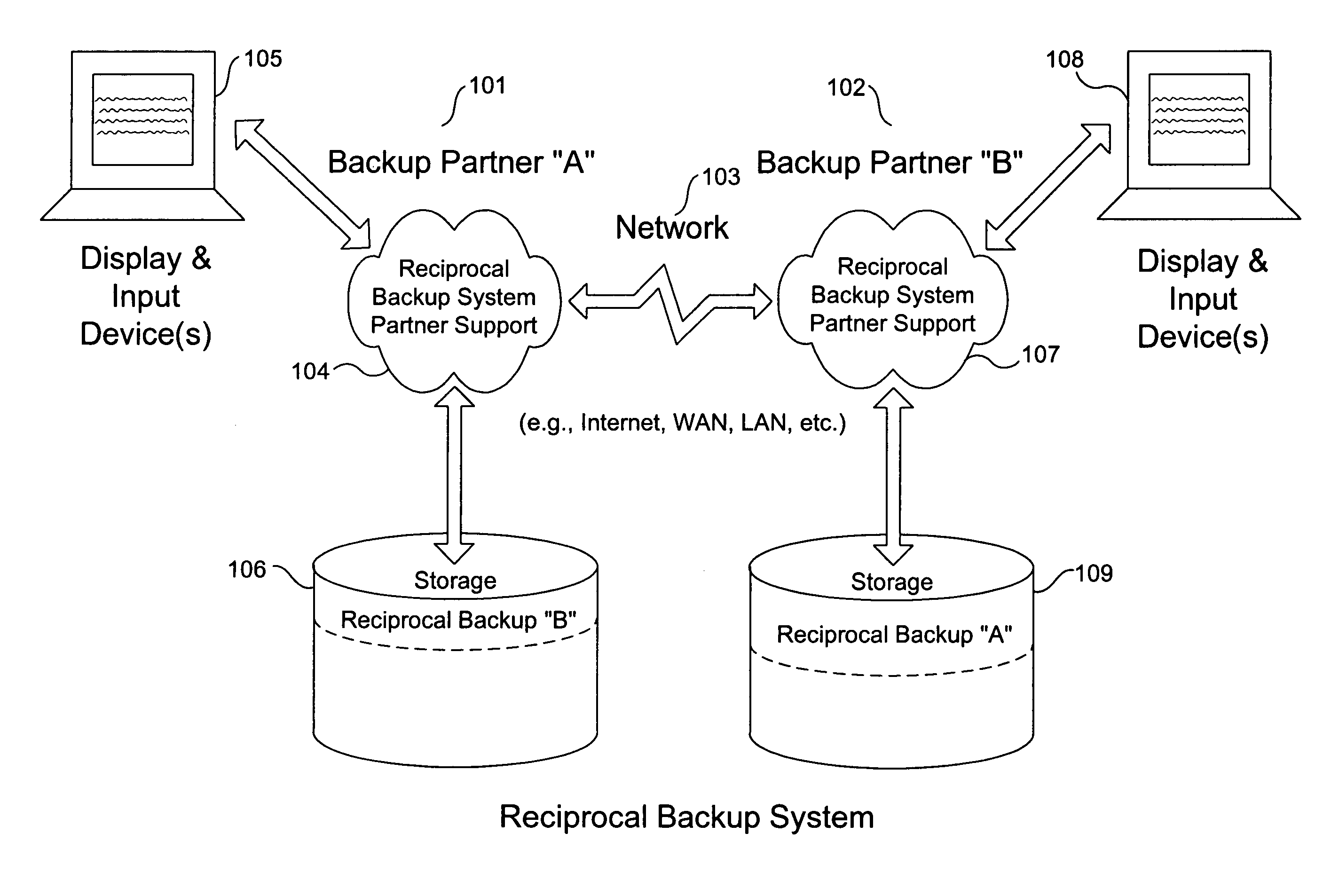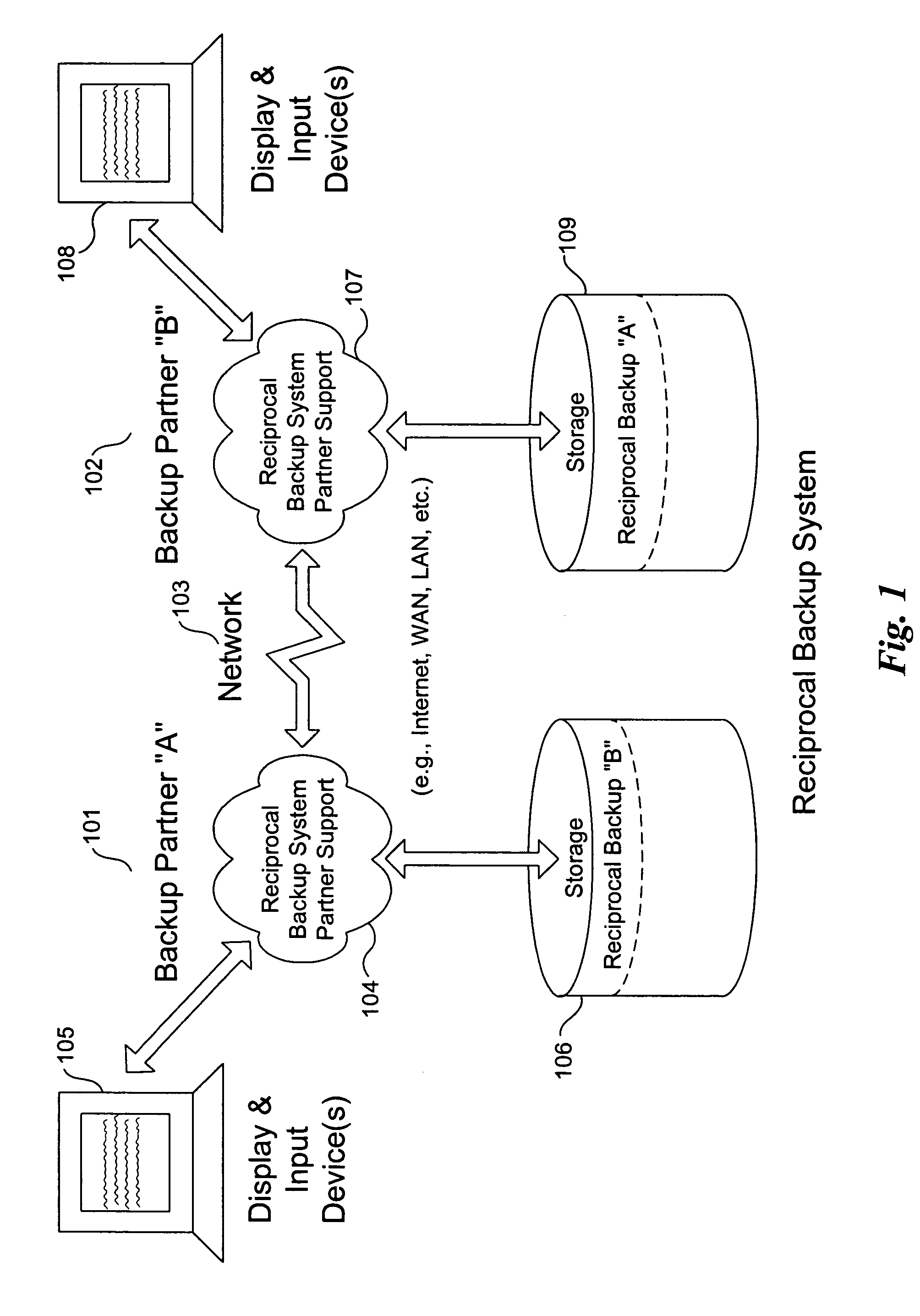Method and system for reciprocal data backup
a data backup and data technology, applied in the field of reciprocal data backup, can solve the problems of data loss, inability to save data, and inability to save data, and achieve the effect of no cost and little effor
- Summary
- Abstract
- Description
- Claims
- Application Information
AI Technical Summary
Benefits of technology
Problems solved by technology
Method used
Image
Examples
Embodiment Construction
[0035]Embodiments of the present invention provide enhanced computer- and network-based methods and systems for backup and restoration of data. Example embodiments provide a Reciprocal Backup System (“RBS”), which enables the users of two or more computer systems connected over a network to engage each other for reciprocal backup needs using peer-to-peer computing techniques. The RBS allows users to backup data on each other's computer systems in a secure manner that allows each user access to only that user's files. In addition, users,can achieve a range of control over the backup process from fully automated all the way to specifying particular data to be backed up or restored upon explicit request. Through the reciprocal sharing of space on each other's disk drives, backup storage is available at little effort and no cost other than the loss of use of that disk space.
[0036]The Reciprocal Backup System allows for users to participate in backup arrangements with one or more compute...
PUM
 Login to View More
Login to View More Abstract
Description
Claims
Application Information
 Login to View More
Login to View More - R&D
- Intellectual Property
- Life Sciences
- Materials
- Tech Scout
- Unparalleled Data Quality
- Higher Quality Content
- 60% Fewer Hallucinations
Browse by: Latest US Patents, China's latest patents, Technical Efficacy Thesaurus, Application Domain, Technology Topic, Popular Technical Reports.
© 2025 PatSnap. All rights reserved.Legal|Privacy policy|Modern Slavery Act Transparency Statement|Sitemap|About US| Contact US: help@patsnap.com



